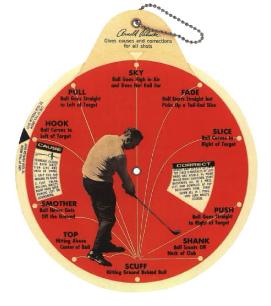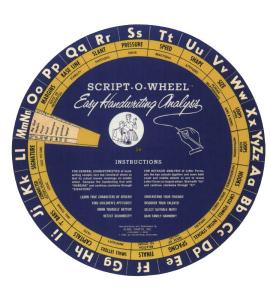 | ||||||||||||
 | ||||||
 | ||||||
Round Tables Copyright 2003 by Jandos Rothstein A Review of Reinventing the Wheel Originally Published in Washington City Paper’s City Books, March 28, 2003 The end of the dot-com boom left us with a lot of hard-won lessons—the most vexed of which is that the so-called new economy was really just the old economy ported to a new medium. The most successful business Web sites turned out to be nothing but humble catalogs and brochures in clunky, if instantly obtainable, form. But if Americans have awaked to the reality that the demand for down vests, say, is fairly constant whether you sell them online or out of a cardboard box, the hyperbolic vocabulary of the Internet revolution is still very much with us. Even the most hangdog bankrupt Internet millionaire continues to believe in the medium—that Web design is fundamentally revolutionary because it is interactive. Nonsense. While it’s true that some Web sites—usually fueled by Java, a programming language beyond the technical reach of most Web designers—are greatly interactive, the majority require no more input from the user than a paperback requires to switch to a new page. And paper itself has been capable of interactivity since before the dawn of metal type. Playing cards, board games, paper dolls, tax forms, and crossword puzzles, to name but a few examples, can be acted upon, modified, and ordered by users. Timetables and phone books have always used the fundamental, easily understandable principles of alphabetization and categorization to make vast quantities of data quickly navigable—all without electricity or a spare phone line. The Internet merely put a techno gloss on tried-and-true print-design techniques. In Reinventing the Wheel, author and noted web designer Jessica Helfand explores a particularly diverting category of pre-Internet interactivity: paper wheel charts. Composed of (usually) two discs rotating (most often) on a common axis, exposing information through one or more die-cut windows in the top layer, such charts date back to before 1500. They were most popular in the 1940s and 1950s, when they were commonly published as promotional giveaway items to teach trivia, serve as reference and educational aids, solve specialized math problems, and, of course, flog goods and services. But though baldly commercial, most are earnest in their desire to convey substantial information in graphically witty ways. According to Helfand, most wheel charts fall into one of two categories. Some are purely mathematical tools—circular slide rules—and will be familiar to anyone who worked on a high-school yearbook in pre-desktop-publishing days: The proportion wheel, which is programmed by lining up the current and the desired size of a photograph along its perimeters, renders a scale ratio in the interior window. This common example is not discussed by Helfand, but she does include the far more impressive Nuclear Bomb Calculator (1964)—Helfand italicizes the titles, crediting the wheels as works of art—used to predict the size and yield of an atomic explosion on the basis of various factors, and the Batter’s Pal (1953), meant to be taken to ball games to calculate batting average on the fly, as it were. But by far the more common, and inherently more interesting, type of wheel charts offer tabular presentation of broader categories of material. Helfand shows numerous examples of early astronomical charts, which presented simplified guides to visible constellations by alignment of, say, time of month, time of day, and longitude. Simple in principle, the projection of the three-dimensional dome that is the night sky on a two-dimensional surface that places North in the middle rather than the top is a remarkable intellectual leap. And such constellation charts are unusual in that they are set up by aligning words or numbers to render a result that is primarily graphic rather than textual. Also common—and now collectible—are volvelles, contrivances for calculating sun- and moonrise and the times of tides. Such devices remained popular throughout their long history. Many of the modern wheels display a kitschy brilliance, an intriguing shared aesthetic—the product of designing a piece that is both an advertisement (at least for itself) and a simple computer. Disks are often covered with bombastic sales copy and off-the-wall typography, such as the out-of-character use of Calypso, a typeface designed to look like three-dimensional pieces of twisted paper, on a 1967 guide to country-music stars—which is otherwise covered in appropriately corny wood-type fonts. Most wheels also accommodate at least nominal instructions for use, as well as the necessary number of windows. Nevertheless, decoration is often lavish, if not always competently rendered. To examine Reinventing the Wheel is to revisit the educational aspirations of the American middle class. Designed for the bebop fan who is also an ornithologist, Nature Wheel No. 1 (1951) features a striking, stylized jazz-album-art-inspired peacock with cutouts in different parts of the bird’s plumage. The rim pictures birds that the user seeks to identify—fortunately, depicted in a more realistic way than the primary image—and the die cuts feature questions and answers about habitat and the like. Interesting Facts About Epidemic Diseases (1932), with reassuring images of a chemistry lab and two severe-looking researchers, gives one something to do with one’s hands, whether convalescent with anthrax, beri-beri, syphilis, or one of 13 other diseases. Many wheels seem designed primarily for entertainment, though. The Fortunescope (1935), decorated with the predictable picture of a turbanned man and crystal ball, “tells, predicts & advises...shocks, thrills & surprises.” It seems to work on the same principal as a Magic 8-Ball, revealing randomized answers in its window. Spelling, phonetics, translation, and other language-related wheels are represented by many fine examples, the most intriguing being the enigmatically minimal British Translation Wheel (c. 1960), the front of which reveals only an English phrase for translation and a number through a window in a austere solid orange wheel. (The translated phrase presumably appears on the opposite side, perhaps allowing people who do not speak the same language to communicate with the wheel only while sitting opposite one another at a table.) But the main value of the book is graphic. The Flying Saucer Spelling Wheel (c. 1930s)—which allows the user to create more than 1,500 words (and quite a bit of gobbledygook) by matching up common phonemes—is decorated with a 1920 World’s Fair–inspired futuristic landscape and an alien robot, in coquille-board red and blue. The Ruhl’s Vitamin D Bread Math Wheel (c. 1920s) shows the quintessential and already vanishing country schoolhouse, pictured with the requisite stern master drilling his students, the equally necessary child in a dunce cap sitting on a stool in the background. The Army-Navy Insignia Guide, decorated with a stiffly amateurish painting of two servicemen, warps space and human bodies to medieval dimensions as shoulder patches become fully visible even when the shoulders themselves are angled away from the viewer. In only one example does Reinventing the Wheel open up a wheel, giving readers a look at the typographical workings underneath the top disk. The 1932 Story of Our Presidents reveals a mosaic of carefully placed and angled text, a sea of information needed to reveal more than facts about the first 30 presidents. The text of the book is torn between two contradictory goals. The first, as expressed in the brief descriptions that accompany most individual wheels, is to make fun of the quaint colloquialism of the originals. Yes, the wheels, when seen by contemporary eyes, do inspire a bit of levity, but most readers will be fully capable of finding the yuks without Helfand’s help, and her comments are often neither witty nor historically astute. Of one wheel, 1932’s Coca-Cola Olympic Events Calendar, which prominently proclaims, “The Pause That Refreshes,” Helfand writes: This double-sided circular event calendar shows track and field events for the 1932 Olympics, featuring comparative statistics from the previous (1928) games...On the reverse side are lists of the finalists for gymnastics, weightlifting, fencing, wrestling, boxing, “Greco-Roman” wrestling, rowing, equestrian and cycling events. Hard as it may be to imagine that any of these athletes paused much at all during the Olympics, it is harder still to imagine them pausing for a Coke. A point so forced it is hardly worth making. And because Helfand allows herself only a short paragraph to describe each wheel, devoting some of the space to smarmy commentary is often a disservice to the reader. Too often, the image is charming but the function baffling. And though she pokes fun at her collection’s campiness, Helfand seems just as interested in proving that the quirky ephemera she is elsewhere willing to ridicule are worthy of serious scholarly interest. Her argument, based on the mystic nature of the circle, is that the circular format has a potency that our culture’s far more common rectangular efforts cannot hope to match. In her concluding essay, she writes: [Wheel charts] represent precision on the one hand, yet suggest an infinite kind of permutation on the other. They embody at once a balanced symmetry yet simultaneously embrace endless possibilities for imbalance, irregularity, and a kind of irreverent compositional frenzy—“a mad art attempting the inconceivable.” One would think a writer so sensitive to the folly of another would not use this sort of New Age mysticism to oversell what is essentially a compendium of kitsch. Contemplating the infinite possibilities of the circle may well have its place, but it has little to do with Helfand’s topic. If wheel charts truly had the potential Helfand claims, they certainly would be more common than they are. But if Helfand makes the twin errors of taking the disks not seriously enough as individual objects and too seriously as a class, Reinventing the Wheel is still well worth owning, particularly for those with an interest in mid-20th-century graphic design. In addition to providing a surprise on almost every page, the book is beautifully, understatedly designed, by Helfand among others. Though thoroughly modern, the airy layout seems as gentle and unhurried as the era in which so many of the wheels were produced. Of course, some will find the book ultimately frustrating because, in the end, it presents static images of designs meant to be picked up and manipulated. Such readers may find themselves wishing for a few hours to play with Helfand’s fabulous wheels. | ||
Jandos Rothstein, Editorial Design, Publication Branding and Design Journalism | ||